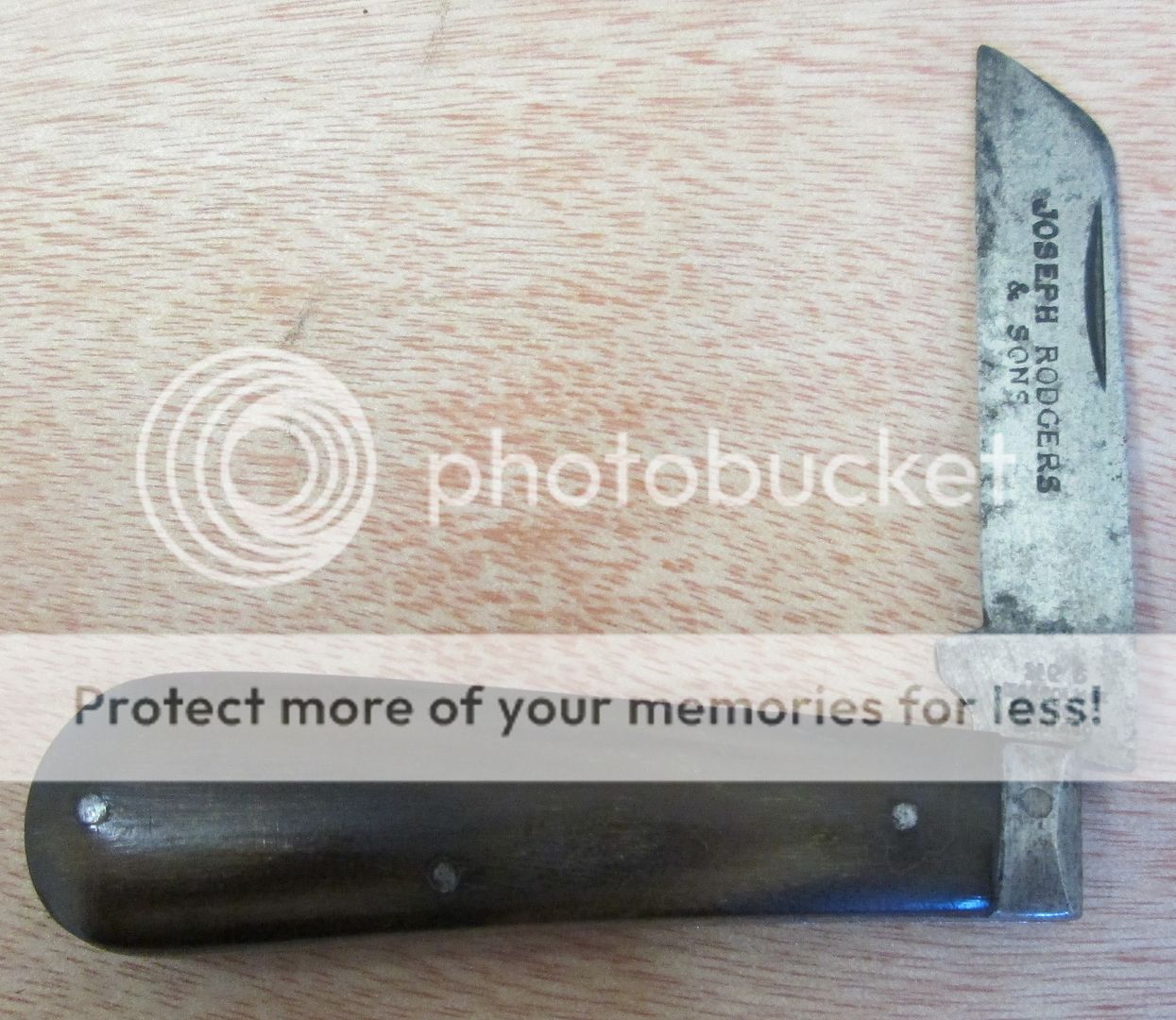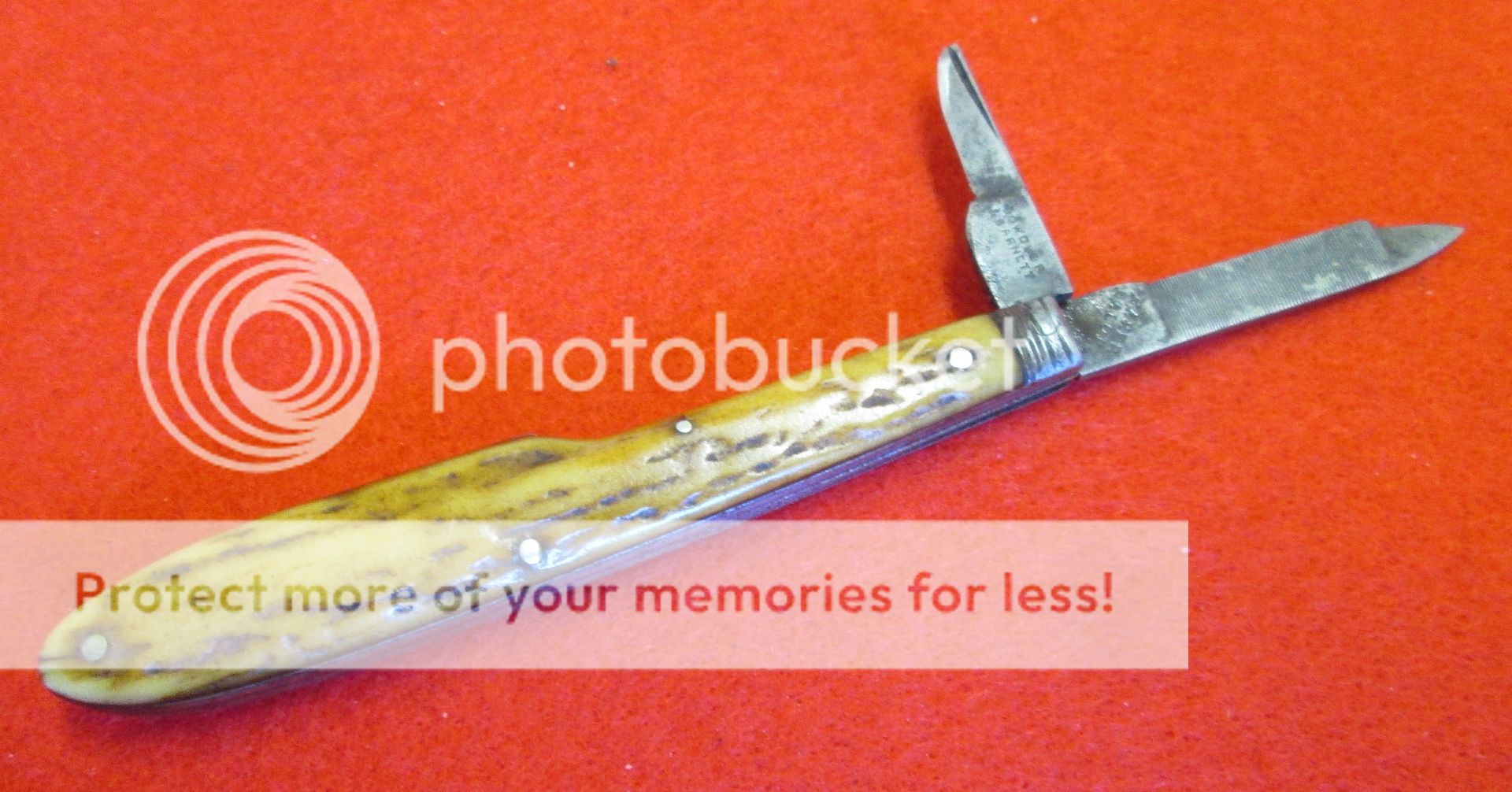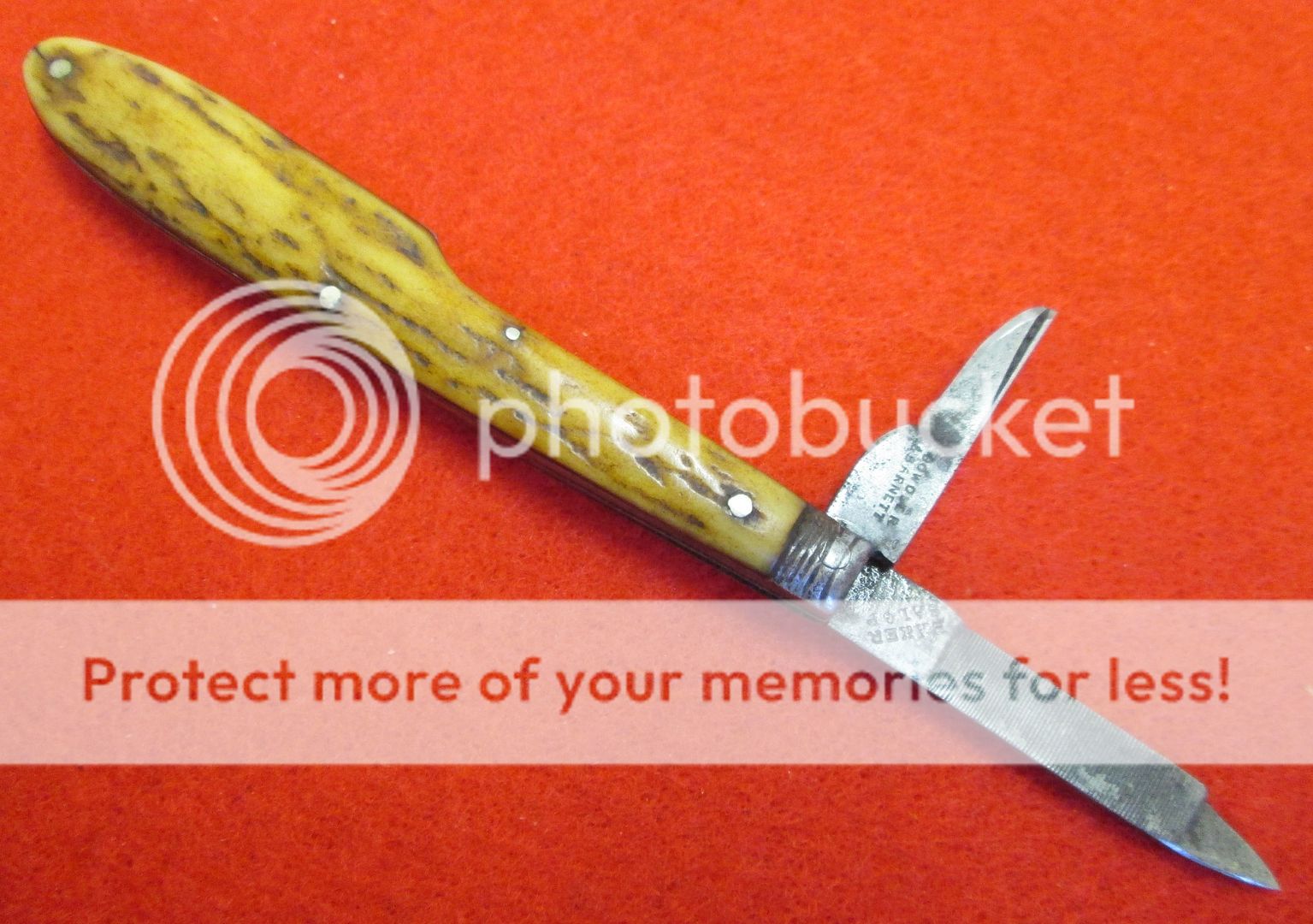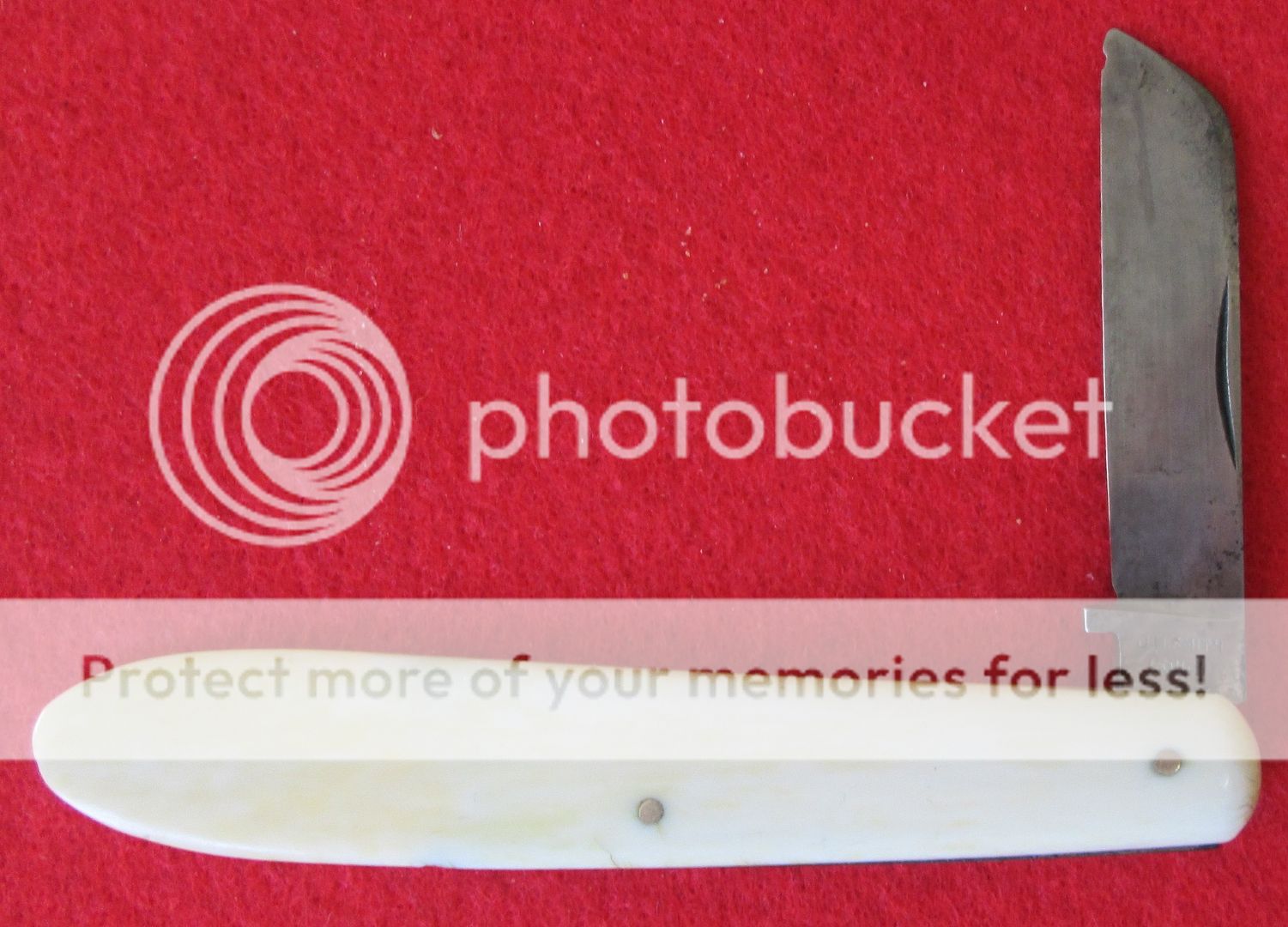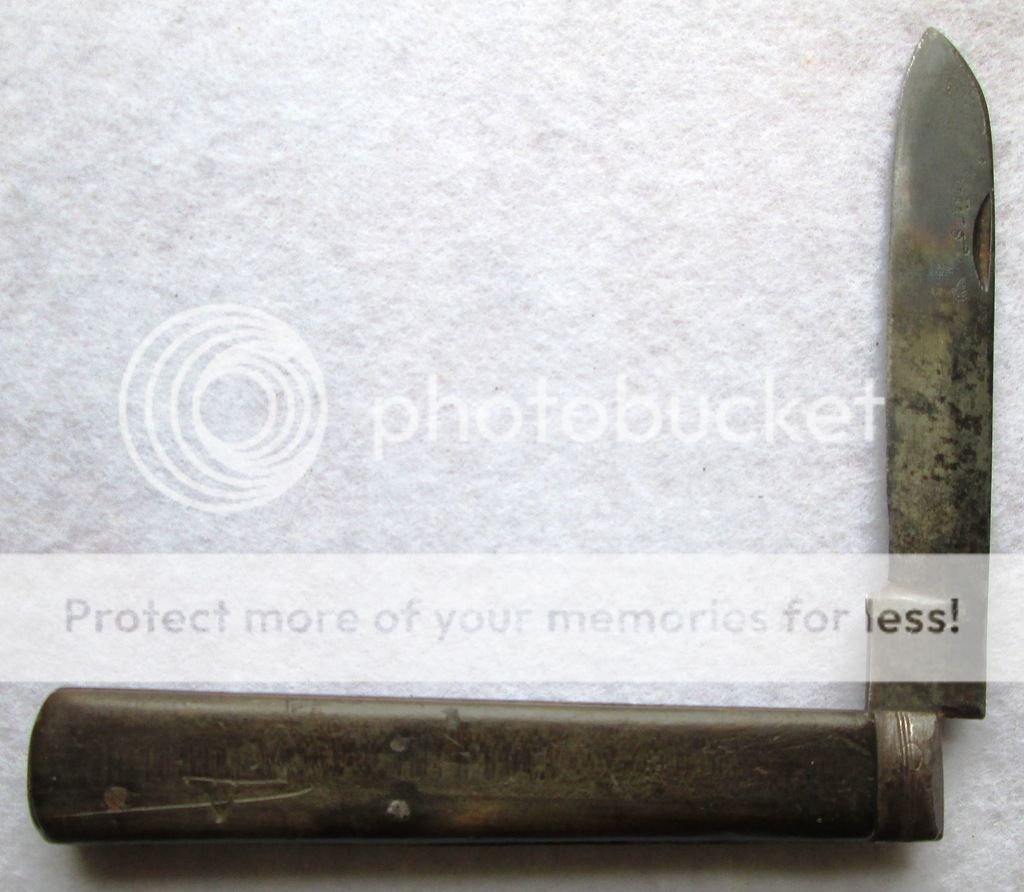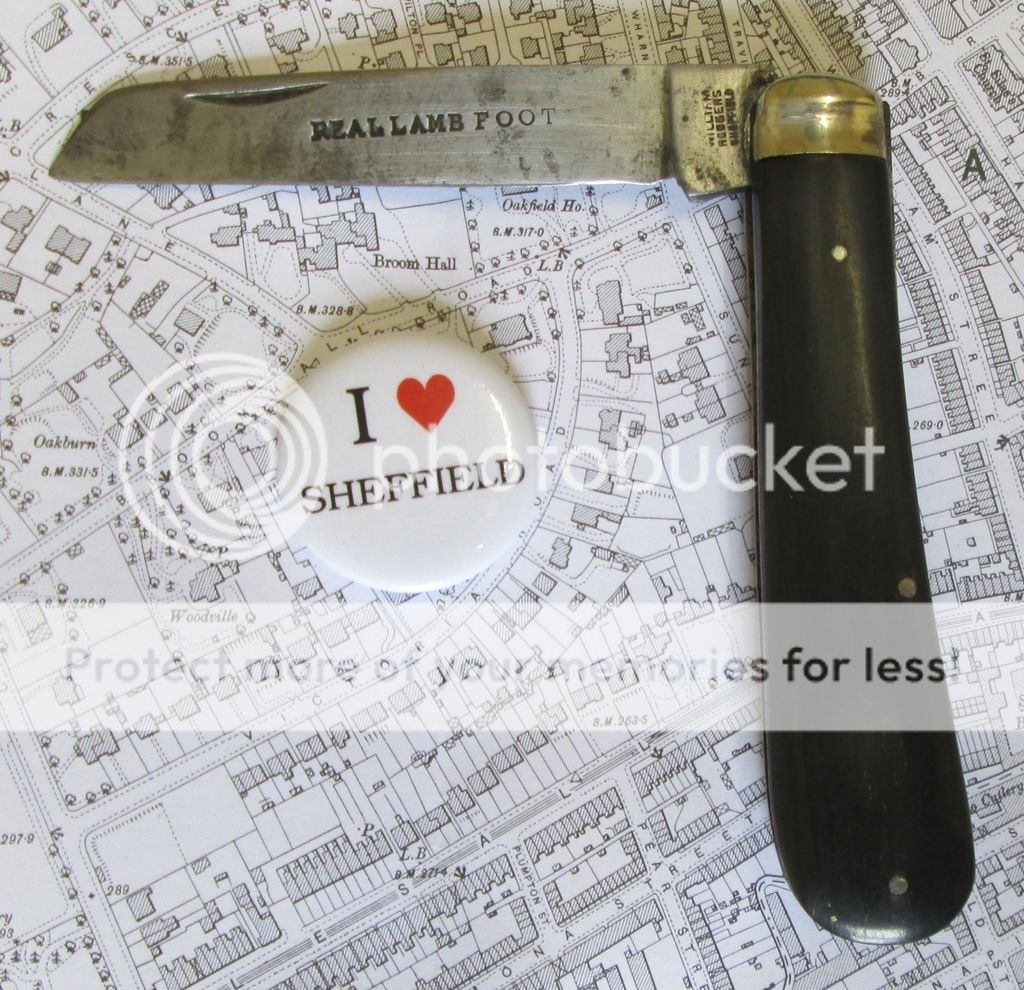- Joined
- Dec 2, 2005
- Messages
- 70,748
With very little to-do, I tackled this lot a week or so ago, but due to some problems with my internet connection, Ive only been able to upload the photos over the past couple of days.

Girl Guides are what Girl Scouts are called outside the US, and what they were originally called there (quite an interesting story in itself). From the look of it, Harry Kilvington was determined to hang onto this Girl Guides Knife, quite an unusual 3-blade pattern, and its certainly seen plenty of good, honest use. Harry, I think, was almost certainly Harriet, and while she etched the year 1947 alongside her name, the knife itself, is older still, since the Yorkshire Steel Company, who made it, folded in 1932.

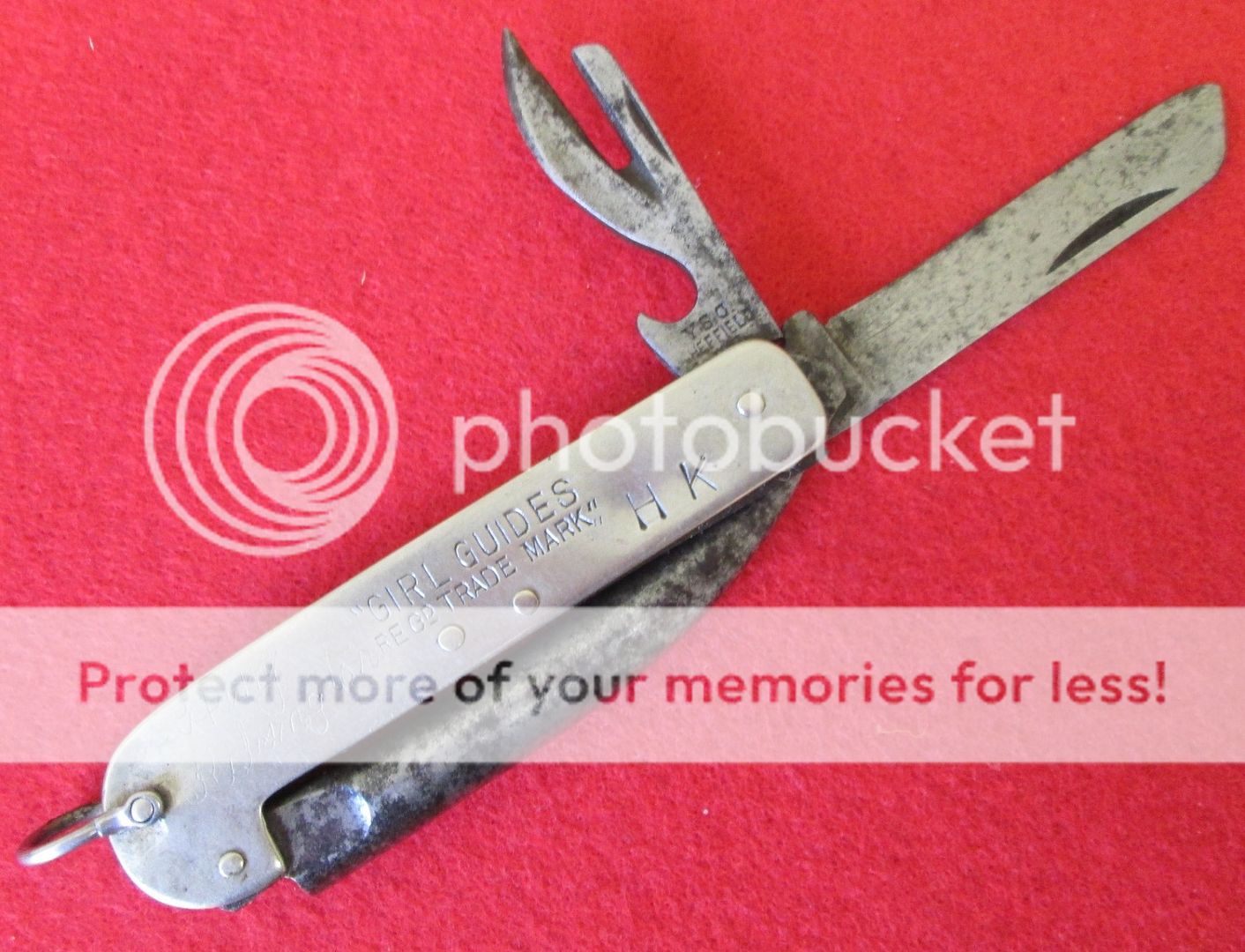




This old Taylors Eye Witness Sleeveboard has also been someones long-term companion.

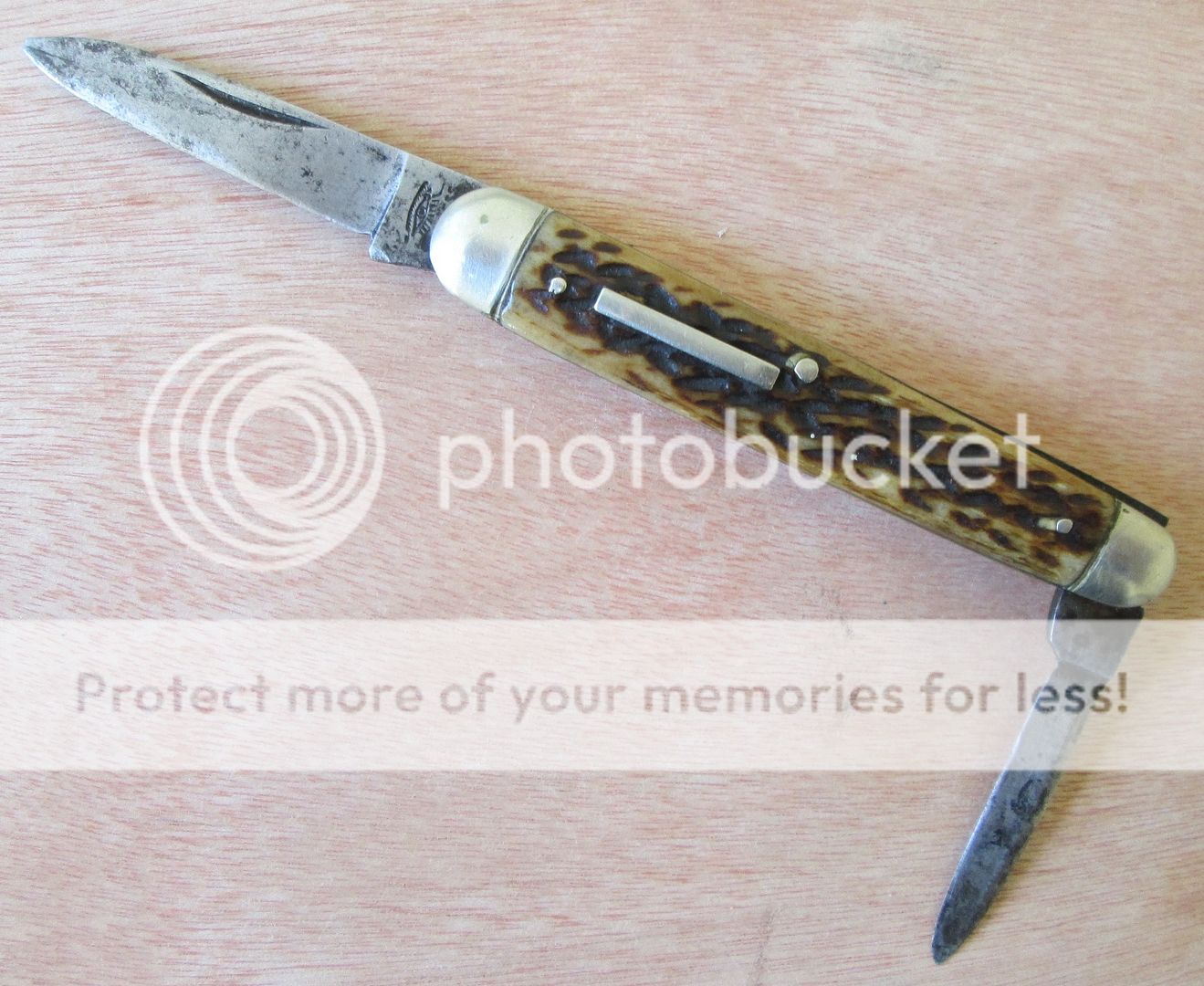

The Yorkshire Evening Post is my local newspaper, a pretty rotten one to be honest, but with a grander past. As is common on Sheffield-made advertising knives, this Firth Stainless pre-WW2 penknife, with sunken joints, doesnt have a makers mark on the tang-stamp, though I suspect it may have been made by Ibbersons. Its a nicely-made knife, which has seen some poor sharpening unfortunately.

This Sheffield-made penknife is from a later period, and these knives were given to the buyers of new Land Rovers. As a consequence, theyre very collectible here. Made by Joseph Rodgers, and it appears to have seen little or no use.


ADEE found this 1943 dated British Army Clasp Knife made by Richards of Sheffield, and cleaned it up for me. A shame someone has taken the end off the Sheepsfoot blade, as its in pretty good shape otherwise.


This Italian Navy Clasp Knife, of much the same design, is of more recent manufacture. No manufacturers markings unfortunately.

This CK Electricians Knife appears to have seen little or no use. A nicely-made knife, but with brutal spring tension.

Also by CK, this Italian-made Congress appears to have seen plenty of use.

A couple of cheapies.


Girl Guides are what Girl Scouts are called outside the US, and what they were originally called there (quite an interesting story in itself). From the look of it, Harry Kilvington was determined to hang onto this Girl Guides Knife, quite an unusual 3-blade pattern, and its certainly seen plenty of good, honest use. Harry, I think, was almost certainly Harriet, and while she etched the year 1947 alongside her name, the knife itself, is older still, since the Yorkshire Steel Company, who made it, folded in 1932.






This old Taylors Eye Witness Sleeveboard has also been someones long-term companion.



The Yorkshire Evening Post is my local newspaper, a pretty rotten one to be honest, but with a grander past. As is common on Sheffield-made advertising knives, this Firth Stainless pre-WW2 penknife, with sunken joints, doesnt have a makers mark on the tang-stamp, though I suspect it may have been made by Ibbersons. Its a nicely-made knife, which has seen some poor sharpening unfortunately.

This Sheffield-made penknife is from a later period, and these knives were given to the buyers of new Land Rovers. As a consequence, theyre very collectible here. Made by Joseph Rodgers, and it appears to have seen little or no use.


ADEE found this 1943 dated British Army Clasp Knife made by Richards of Sheffield, and cleaned it up for me. A shame someone has taken the end off the Sheepsfoot blade, as its in pretty good shape otherwise.


This Italian Navy Clasp Knife, of much the same design, is of more recent manufacture. No manufacturers markings unfortunately.

This CK Electricians Knife appears to have seen little or no use. A nicely-made knife, but with brutal spring tension.

Also by CK, this Italian-made Congress appears to have seen plenty of use.

A couple of cheapies.



